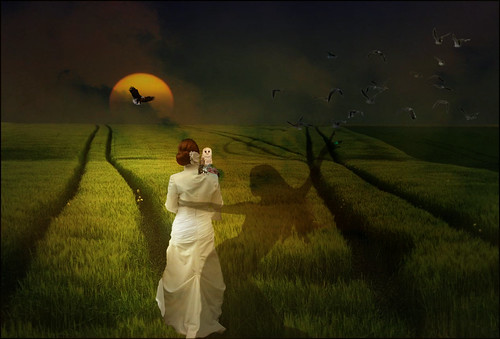The old wicked witch is making headlines between Delaware’s Christine O’Donnell and Halloween’s approach. It was interesting to see the responses to O’Donnell’s admission that she’d dabbled in a little witchery in her youth. When I first heard about it I thought, “Considering how things have been going, what’s the harm with having a little magic in Washington?” It looks like it could use some to me.
Then I got to thinking a little more about witches and how they’re viewed with fright and disdain. They aren’t that scary, and I’ll explain why.
The true definition of the word “witch” is “Wise One.” She was the natural healer and midwife for centuries, using herbs and skills passed down through many generations to help peasant populations. She birthed the babies, assisted the dying, and helped heal the sick. The witches were often the only practitioners of medicine for entire villages. Many of her remedies are still used today. Did you ever drink mint tea?
.
Hundreds of years ago, European ruling classes began training men at the university level to become physicians. This brought on the medical profession as we know it today, which is based on science. This fascinating history is well-researched and reported in a book called Medicine Women: A Pictorial History of Women Healers by Elisabeth Brooke.
Women had been deeply involved in the healing arts for centuries. In the midst of the new practice of medicine based on science, they continued their own healing practices, using extensive knowledge of plants, herbs, and roots. To their ultimate detriment, they also relied heavily on what could be called intuition, a 6th sense. For the new ruling class, this was too mysterious, and against God’s law.
Along with the cultural change that the new European ruling classes inspired came the notion that healers were not following a proper code of conduct. Indeed, some of their practices were so strange (rituals, nighttime celebrations, and so forth) they could very well be assisted by the devil himself. Healings that occurred in ways that didn’t make sense were deemed too magical, unnatural, and opposed to God.
During this time, woman-as-healer was turned into the wicked witch she is caricatured as today, complete with evil intentions, scary spells, a big crook nose, dark draped clothing, a broomstick, and a loud cackle. In a Google search to define the word witch, a variety of definitions come up, including a woman who practices black magic, an ugly, ill-tempered old woman, a woman having a compact with the devil, even “a woman who is not submissive to her husband.”
Because the mysteries and misunderstandings of old-fashioned herbal healing became mixed up in this confusion, women healers (and a large number of male healers, too) were eliminated. They were silenced through fear or violently killed. But the practice lived on. Even some of the common rituals and celebrations have been incorporated into our modern holidays.
Plants that sprout from the earth have healing qualities, and this simple fact isn’t easy to ignore. Why not use some of them? It’s that time of year when we find ourselves or loved ones catching a bug. I think you’ll find this special brew to be a welcome “magical potion,” helping you feel fine throughout the flu season. You can use it when you’re coming down with something or when you are already in the midst of a cold or flu.
Witch's Brew to Heal the Flu
3 quarts water
8-10 pieces of fresh ginger (cut into ½” pieces)
½ tsp cayenne
The juice of two organic lemons
2 TBS crushed organic garlic (don’t be afraid of garlic – better to smell like it than spread germs to others!)
Put all ingredients into a stainless steel, ceramic, or glass pot. Simmer 8-10 minutes. Drink as warm as possible. This can be left on the back burner of your stove for a few days to be reheated as you go along. Drink 3-4 cups a day, as needed.

No comments:
Post a Comment